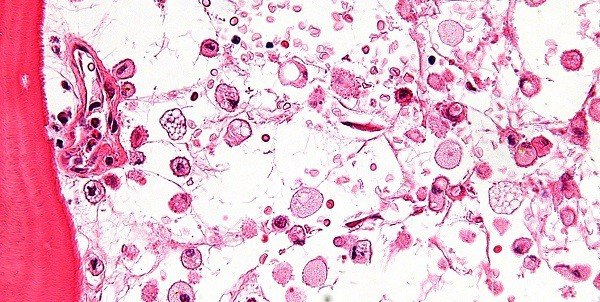Gaucher disease

Description
Gauche disease results from the accumulation of certain fatty substances in certain organs, especially the spleen and liver. This is why these organs increase in size, which can affect their usual functions.
Fatty substances associated with the disease can also accumulate in the bone tissue. And this leads to the weakening of the bones and an increase in the risk of fractures.
If the bone marrow is affected, it is possible to affect the ability of the blood to clot.
The enzyme that breaks down these substances does not function properly in people with this disease.
Treatment consists of therapy replacing the non-functioning enzyme.
The disease is hereditary and occurs in Jews from Central and Eastern Europe, collectively known as Ashkenazi, who are believed to be descendants of the Khazars.
What are the symptoms?
The signs and symptoms of the disease can vary widely. In siblings, even in identical twins, the disease manifests itself with different severity. Some of those affected may develop different clinical manifestations.
The most common symptoms of the disease are:
• Abdominal complaints – as the liver and especially the spleen can become dramatically enlarged, the abdomen can become painful and swollen;
• Skeletal abnormalities – the disease can weaken the bones, and this increases the risk of frequent painful fractures. It is possible that they prevent the normal blood supply to the bones, which can cause necrosis of part of the bone tissue. to exhaustion. The disease also affects platelets, which are involved in blood clotting.
In rare cases, the disease can affect the brain, which can cause seizures, muscle stiffness, difficulty swallowing and abnormal eye movements.
A rare subtype of the disease begins in infancy and usually causes death by the age of 2.
When should we seek medical help?
If you or your child has any of the signs and symptoms associated with the disease, make an appointment with your GP.
Treatment of Gaucher disease
Although the disease is incurable, there are many therapeutic methods to control symptoms, prevent irreversible damage. In some people, the symptoms may be so mild that no treatment is needed.
Medications
In many of the patients, improvement of the condition was observed after starting treatment with:
• Enzyme – replacement therapy – this method replaces deficient enzymes with synthetic ones. Enzyme replacement therapy is given in an outpatient procedure intravenously, usually in high doses at two-week intervals. Allergic reactions or hypersensitivity reactions to the treatment with synthetic enzymes are observed in patients.
• Miglustat – this medication is administered orally and affects the production of fatty substances, which are most often deposited in the liver and spleen. Common side effects of the medication are diarrhea and weight loss.
• Medications against osteoporosis – these medications will help build the bone mass that is weakened as a result of the disease.
Surgical and other procedures
If the symptoms are too severe and for one reason or another less invasive therapeutic methods cannot be applied, then your doctor may suggest:
• Bone Marrow Transplantation – in this procedure, blood-forming cells that have been damaged by the disease are removed and replaced, which relieves many of the signs and symptoms of the disease;
• Removal of the spleen – before enzyme replacement therapy became available, this procedure was used as the only method of treating the disease.



